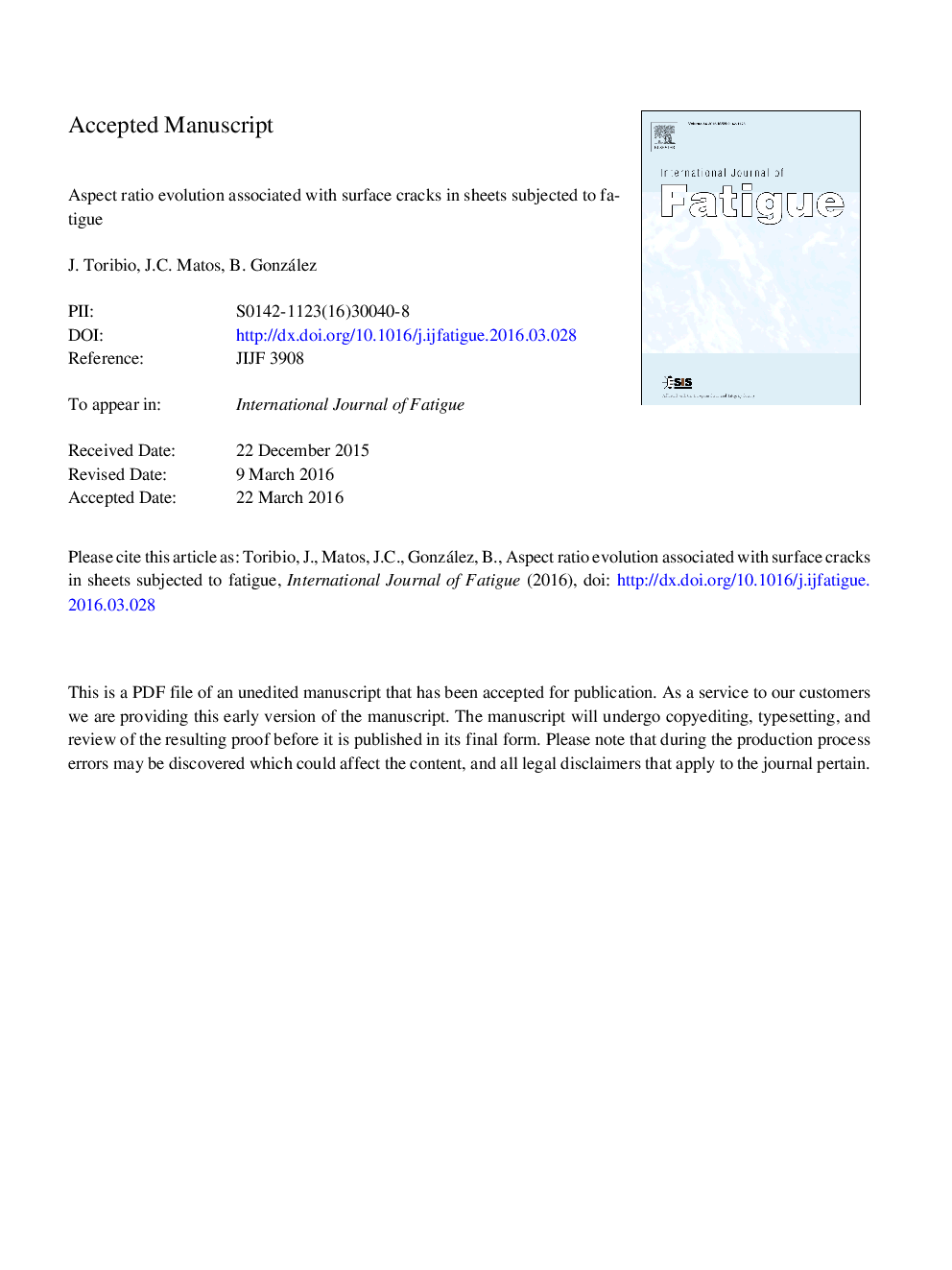| Article ID | Journal | Published Year | Pages | File Type |
|---|---|---|---|---|
| 5015368 | International Journal of Fatigue | 2016 | 28 Pages |
Abstract
This paper presents a fracture mechanics approach to the phenomenon of fatigue crack propagation in geometries such as plates and sheets. The aim is to analyze the crack path (aspect ratio evolution) in a wide range of engineering materials (characterized by different values of the m-parameter of the Paris law) and subjected to two kinds of cyclic loading (tension and bending). To this end, a numerical procedure was designed and implemented starting from a discretization of the crack front (defined as an ellipse) and considering a sort of crack advance on the basis of the Paris law, governed by the stress intensity factor (SIF) obtained by Newman and Raju. Numerical results suggest that surface cracks in sheets tend to grow following a preferential cracking path associated with a very shallow initial flaw with quasi-circular front shape. The rise of the Paris coefficient m leads to a faster convergence between the different crack paths (i.e. quicker approach of the diverse curves) during fatigue propagation starting from the distinct initial crack aspect ratios. In addition, better convergence is also achieved for bending loading (when compare with the case of tension).
Keywords
Related Topics
Physical Sciences and Engineering
Engineering
Mechanical Engineering
Authors
J. Toribio, J.C. Matos, B. González,
